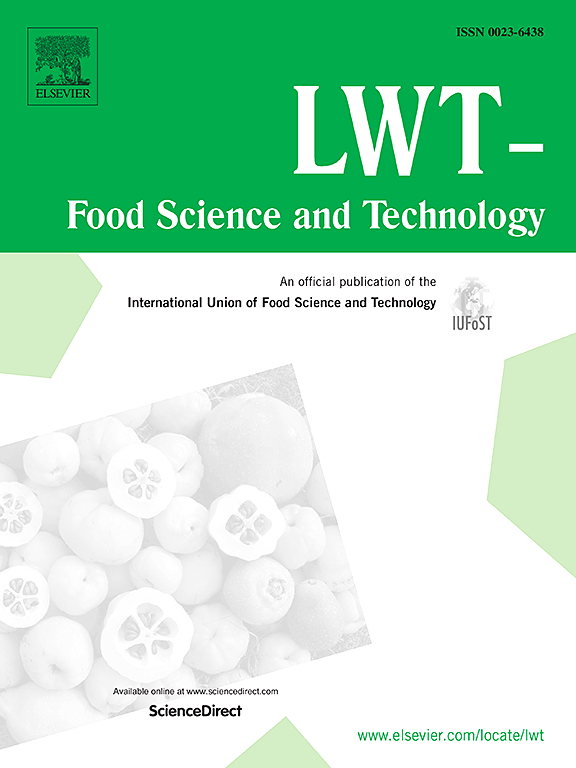Protein-glutaminase-mediated functional modification of fish myofibrillar protein and its gelation mechanism
IF 6
1区 农林科学
Q1 FOOD SCIENCE & TECHNOLOGY
引用次数: 0
Abstract
Protein-glutaminase (PG; EC 3.5.1.44) effectively enhances protein solubility and functionality through targeted deamidation. Current strategies for improving textural properties of low-sodium myofibrillar protein (MP) gels predominantly rely on salt addition, which conflicts with health-driven sodium reduction demands. This study demonstrated that PG-induced deamidation significantly increased the net negative charge of MP, promoting filament dissociation and consequently enhancing solubility in neutral aqueous solutions. Volatile compound profiling revealed that deamidation substantially modified the flavor characteristics of MP, particularly reducing key fishy odor compounds, such as hexanal, nonanal, and 1-octen-3-ol. The deamidated MP (DMP) exhibited unique thermally reversible gelation behavior that could be melted through heating and reconstituted into a stable gel upon refrigeration. Notably, DMP gels showed improved gel properties, including water holding capacity (WHC) and springiness, along with improved umami taste perception. Sensory evaluation confirmed intensified umami perception in DMP gels, correlating with increased umami amino acid levels. These findings established a theoretical foundation for developing low-sodium MP gel products with improved textural properties, reduced off-flavors, and enhanced palatability.
求助全文
约1分钟内获得全文
求助全文
来源期刊

LWT - Food Science and Technology
工程技术-食品科技
CiteScore
11.80
自引率
6.70%
发文量
1724
审稿时长
65 days
期刊介绍:
LWT - Food Science and Technology is an international journal that publishes innovative papers in the fields of food chemistry, biochemistry, microbiology, technology and nutrition. The work described should be innovative either in the approach or in the methods used. The significance of the results either for the science community or for the food industry must also be specified. Contributions written in English are welcomed in the form of review articles, short reviews, research papers, and research notes. Papers featuring animal trials and cell cultures are outside the scope of the journal and will not be considered for publication.
 求助内容:
求助内容: 应助结果提醒方式:
应助结果提醒方式:


